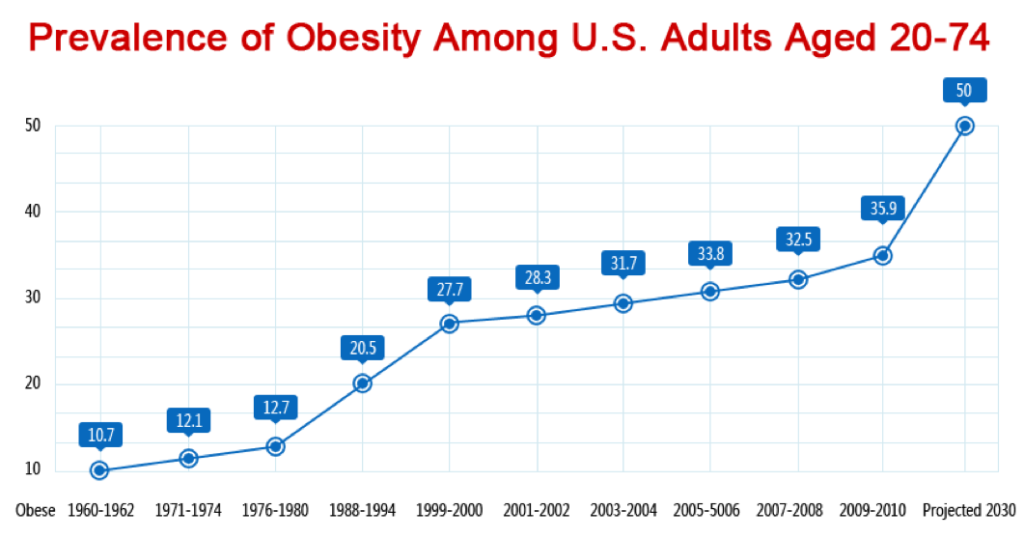When meeting with prospective clients there are a few things I like to stress right out of the gate. I’m not here to convince you to change your lifestyle. If there is one thing I’ve learned in talking to family and friends about making the decision to leave the high-carb, low-fat paradigm, it’s that there is no convincing: people are ready when they’re ready. For many, this transition may require not only a significant upheaval of their dietary, fitness, and lifestyle practices, but also a total shift in their perception of what is “healthy” according to conventional wisdom. There are changes that will legitimately challenge your previously held beliefs (“wait — dietary fat isn’t clogging my arteries?”). Therefore, a serious commitment and a genuine desire to change are absolutely imperative for one to have a real chance at reaping the benefits of these changes — you cannot half-ass your way to a healthier lifestyle. This doesn’t mean that we can’t transition gradually, in fact, for some this may be the optimal approach. What it does mean is that we’ve got to be all-in: physically, mentally, and emotionally. This brings me to what I’ve established as the five most important factors in determining your success in reshaping your lifestyle: accepting responsibility, setting intention, managing expectations, establishing priorities, and practicing mindfulness.
But why change at all?
Western medicine and the American healthcare system are broken, and they have been for a long time. Allopathic medicine is designed to treat symptoms and manage diseases once they’ve developed, and it can be very effective in certain circumstances. However, it is not designed to prevent disease or to even treat the root causes, let alone to promote optimal health. In America, our healthcare system functions as not much more than a business. To put it simply: insurance companies, healthcare networks, “Big Pharma,” etc, prioritize profits over the health of the American people. This doesn’t mean that individual healthcare practitioners don’t care about their patients — I believe they do — only that we’ve created a paradigm in which many practitioners are drastically limited in their abilities to truly help people lead healthy lives.
The current state of (mainstream) nutritional science is not a whole lot better. Facing a heart disease epidemic, the American Heart Association (AHA) initially adopted its low-fat stance in 1961 (1). In 1977, the USDA’s first edition of dietary guidelines was published, recommending an increase in carbohydrate consumption and decrease in dietary fats and cholesterol (2). Since that time, obesity and diabetes rates have skyrocketed, while heart disease remains the number one cause of death in the United States.

CDC Data (3).

CDC Data (4).
In spite of these very clear statistics, the AHA has recently doubled-down on their low-fat stance (5). The USDA, AHA, and many other leading health organizations have quite clearly led us astray. In fact, the New England Journal of Medicine is predicting a potential decline in life expectancy for Americans, due primarily to the growing rates of diabetes and obesity.
So what can we do about it?
We begin by accepting responsibility; it’s time to take control of your own health. It’s important to understand that your journey to optimal health is yours and yours alone. Yes, there will be others along the way who care about you and may help to guide you along your journey, but at the end of the day, your health is your responsibility. If you don’t hold yourself accountable, who will?
Secondly, you must set your intentions: what are your goals? “Getting in shape,” or “losing weight,” won’t cut it here; I’m talking about sitting down and really defining your health-related goals. Why do you want to “get in shape?” Maybe you want to run a marathon, or join a recreational sports league. Maybe you just want to be able to keep up with your grandkids. Why do you want to “lose weight?” Are you concerned about legitimate health issues like diabetes or cardiovascular disease? Do you want to boost your self confidence and look better naked? Or are you just sick and tired of being sick and tired?
In addition to defining our goals, we must also learn to manage our expectations and acknowledge our limitations. We aren’t all going to become elite athletes. Not everyone can comfortably or healthfully achieve six-pack abs or 8% body fat. And we don’t need to. In short, this is about recognizing that a balanced life occurs when we’re able to create sustainable lifestyle practices that promote general health and happiness. More importantly, these changes take time. You’ve got to keep in mind that you are (likely) working to reverse decades of damage to your body, mind, and spirit; optimal health won’t happen overnight and it won’t be without difficulty. This is a journey, and we must learn to enjoy each and every step along its path.
While we all run into difficulties at different stages of this process, I believe this next step is toughest for most of us. The commitment to create a healthier lifestyle requires us to establish new priorities in our everyday lives. To put things in perspective, you have to ask yourself, what is more important than your own health? The simple, honest answer is nothing (unless you have kids — but that’s kind of the same thing in this context). When we’re healthy, we feel good, we’re happier, we have less stress and more patience; every aspect of life improves. We become better versions of ourselves: better friends, lovers, parents, brothers, sisters, sons and daughters. After all, that’s our only goal in life, isn’t it? To constantly strive to become the best version of ourselves, and to provide our children with the tools to do the same?
Some of these changes will be small and relatively easy, like spending your evenings reading or conversing with loved ones rather than slouched in front of the television. But some decisions are more complicated, for instance when you’re confronted with the decision to purchase grass-fed beef from a local farmer at twice the cost of the meat in the supermarket. This is one of the big arguments against the grass-fed, organic lifestyle: “it’s too expensive!” Where is this money supposed to come from?
Well, for starters, the idea that real food is too expensive seems to be a relatively new concept. In 1930, Americans spent 24.2% of their disposable income on food. Today, this number has dropped to 9.4% (6). On one hand, food production has changed: we rely more on CAFOs and mono-cropping than our grandparents did, allowing us to buy “conventionally raised” chicken, pork, and beef for pennies on the dollar and process the hell out of corn, soy, and wheat, to create all sorts of cheap, processed “foods.” On the other hand, I believe materialism and consumerism have pushed us to consider food as less important: we’d rather save money on food so we can spend it on cars, cable, internet, entertainment, extra bedrooms, extra bathrooms, swimming pools, the list is endless. I would also be remiss if I failed to remind you that we really do vote with our dollars. I believe Will Winter said it best: “every bite [of food] you take is a vote for the kind of food we want to have on our planet.”

(7)

(8)
The second major issue folks seem to have with prioritizing their health is time and effort. In 2014, Americans spent more money dining out than on food in their own homes (8). We also “spend the least on food consumed at home compared with just about every other country in the world,” according to Annette Clausen, an agricultural economist with USDA’s Economic Research Service (9). I hear this a lot, “I don’t have time to prepare all of my meals myself!” Yet, we also spend countless hours in front of the TV, scrolling down our Facebook feeds, or just being generally unproductive. There are also plenty of effective and efficient strategies for meal prepping if we’re willing to put the effort into doing so. And remember — every meal doesn’t need to be one of the meticulously crafted masterpieces we see all over Instagram, most of my meals are made in one pan. There’s no way to add more time to the day, but we do get to decide what we do with each 24 hours.
The ways in which you need to adjust your priorities will, of course, be relative to your income level and lifestyle (fortunately, healthy food choices do exist on a spectrum: you don’t have to choose between grass-fed beef liver and diabetes — there is plenty of middle ground). The point I’m trying to make here is that, no matter your income or lifestyle, there is always enough time and money to nourish your body, sometimes it just requires making sacrifices in other areas of your life. So ask yourself honestly, which would you rather sacrifice, your health or your TV?
At this point, you’ve accepted responsibility and set your intention; you’re managing expectations and you’ve got your priorities in line; you really are ready to revamp your lifestyle and commit to achieving optimal health. Now, it’s about execution: avoiding the donut, sticking to your exercise program, getting to bed on time. So how do we ensure success? In a word, mindfulness. Mindfulness is about being fully present in a given moment; or, as Jon Kabat-Zinn puts it, “mindfulness means paying attention in a particular way; on purpose, in the present moment, and nonjudgmentally.” In this specific case, it’s also about focusing awareness on one’s thoughts, emotions, and bodily sensations. Are you really hungry, or just bored? If you’re going to eat something that you know is unhealthy, try to pay close attention to the way it makes you feel. It’s easy to see how practicing mindfulness can become the ultimate tool for establishing and maintaining behavioral changes. Learning to be mindful at every turn is a simple process, but it isn’t easy; it requires practice, but it is one of the most rewarding changes you can make for yourself.
So, there you have it: five steps for establishing and maintaining new, healthier lifestyle practices! I believe that by following these steps, anyone can find the strength and willpower to improve their quality of life. You already have everything you need within yourself, you just need to access it.





Leave A Comment